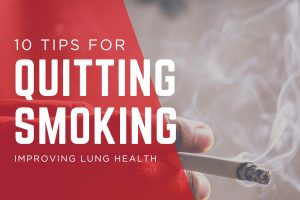Why quitting is the best decision you’ll ever make
It’s the quiet moments that catch people off guard. Maybe it’s on the drive to work, during a tense meeting or on a rainy afternoon. You feel that familiar urge creeping in. A cigarette would take the edge off, just for a moment. For millions of people across the UK, smoking remains one of the most difficult habits to break. Not because they don’t want to quit, but because nicotine is powerfully addictive, and the rituals around smoking can feel deeply embedded in daily life. Yet, every day, thousands of people succeed. They stub out their final cigarette and reclaim their health and their freedom.
The true cost of smoking
By now, most people know smoking is harmful. But the depth of its damage can’t be overstated. Smoking kills around 76,000 people in the UK each year, and for every death, countless others suffer from smoking-related diseases that severely impact their quality of life. Smoking affects nearly every organ in the body. It weakens the heart, starves your cells of oxygen, narrows blood vessels and damages your lungs. Smokers are three times more likely to die prematurely and on average, they live a decade less than non-smokers.
The diseases that follow
Smoking is linked to a wide range of serious illnesses, many of which are chronic and life-altering. These include:
- Lung cancer.
- Chronic obstructive pulmonary disease (COPD).
- Heart disease and stroke.
- Cancers of the throat, mouth, bladder, kidney, cervix and more.
- Type 2 diabetes.
- Infertility and pregnancy complications.
- Weakened immune system.
But here’s the good news, your body starts healing the moment you quit. Within 20 minutes, your heart rate drops. Within 48 hours, nicotine is flushed from your system. After a year, your risk of heart disease is halved.
10 Tips for quitting smoking
Quitting isn’t about willpower alone. It’s about strategy, support and mindset. So here are ten tips that can help you quit for good:
1. Set a clear quit date
Commit to a specific day when you’ll stop smoking completely. Give yourself time to prepare, but don’t delay indefinitely. Mark it on your calendar and tell others, accountability helps.
2. Understand your triggers
Identify the moments you usually crave a cigarette: stress, boredom, alcohol, social settings or certain times of day. Plan ahead and avoid temptation.
3. Use Nicotine Replacement Therapy (NRT)
Patches, gum, sprays, lozenges and inhalators can reduce withdrawal symptoms. These products are widely available and proven to increase quit rates.
4. Try prescription medications
Talk to your GP about prescription treatments. Medications can reduce cravings and make smoking less pleasurable.
5. Find your “why”
Whether it’s being around longer for your kids, improving your health or saving money, write down your personal reasons for quitting.
6. Swap the habit, not just the cigarette
Replace the ritual of smoking with something else. Instead go for a walk or chew gum. The goal is to retrain your brain.
7. Avoid “just one”
The idea of having a single cigarette can be tempting, but it’s often the first step to a full relapse. Stay committed and focused.
8. Track your progress
Apps like Smoke Free or NHS Quit Smoking help you to monitor how many days you’ve been smoke-free, how much money you’ve saved and how your health is improving.
9. Join a stop smoking service
Local services offer one-to-one support, group sessions and expert advice. You’re far more likely to quit successfully with help.
10. Be kind to yourself
Slipping up doesn’t mean failure. Quitting is a process. Learn from mistakes and keep going. Each attempt brings you closer to success.
The bottom line
We’ve covered the dangers, the diseases and most importantly, the tips that can help you become smoke-free. Smoking is one of the most significant threats to your health and quitting is one of the most powerful choices you can make. Quitting isn’t about giving up, it’s about getting your life back.


